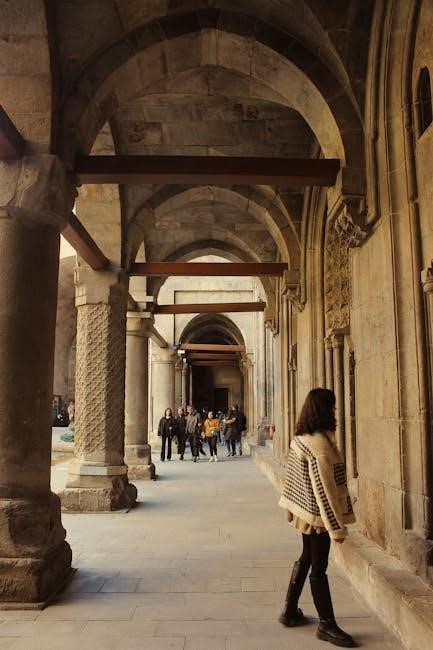Blacksmithing is a core crafting profession in WoW Classic, allowing players to forge powerful armor, weapons, and items essential for Warriors, Paladins, and other melee classes. It offers a sense of progression and customization, enabling the creation of epic gear and Twink items for both PvE and PvP. This guide covers everything from leveling to specializations, helping you master the art of shaping metal into legendary equipment.
What is Blacksmithing?
Blacksmithing is a primary crafting profession in World of Warcraft Classic that allows players to craft weapons, armor, and other metal items. It is particularly useful for classes like Warriors and Paladins, who rely on plate armor and powerful weapons. Blacksmithing involves using ores and other materials to create items at an anvil. Players can specialize in either Weaponsmithing or Armorsmithing, focusing on crafting weapons or armor, respectively. This profession requires a significant investment of time and resources but offers the ability to create high-quality gear for personal use or to sell on the Auction House. It is often paired with Mining to ensure a steady supply of raw materials.
Importance of Blacksmithing for Warriors and Paladins
Blacksmithing is essential for Warriors and Paladins in WoW Classic, as it provides them with high-quality plate armor and powerful weapons. These classes rely heavily on their equipment for survival and damage output, making Blacksmithing a valuable profession. By crafting their own gear, Warriors and Paladins can ensure they have the best possible items for their needs, often before they can acquire such gear through other means. Additionally, Blacksmithing allows for the creation of niche items, such as specialized weapons or armor sets, which can significantly enhance their performance in both PvE and PvP scenarios. This makes the profession a cornerstone for these plate-wearing classes, offering both convenience and a competitive edge.

Getting Started with Blacksmithing
Blacksmithing is a core profession in WoW Classic that requires trainers, materials, and an anvil to craft items. Start by learning the trade in major cities like Stormwind or Orgrimmar, then gather ores and tools to begin crafting. Pairing Blacksmithing with Mining ensures a steady material supply, making it easier to progress and create essential gear for yourself or others.
Trainers and Learning Blacksmithing
To begin Blacksmithing in WoW Classic, players must find a Blacksmithing trainer. These trainers are located in major cities like Stormwind for Alliance and Orgrimmar for Horde. Early training includes Apprentice and Journeyman ranks, which are available from city trainers. As you progress, Expert and Artisan training require visiting specialized trainers, such as Bengus Deepforge in Ironforge for Alliance or Okothos Ironrager in Orgrimmar for Horde. Additionally, Breck Rockbrow in Stranglethorn Vale offers Artisan training for both factions. Trainers provide the necessary recipes and skill advancements, so locating them is essential for unlocking higher-level crafting. Ensure you check NPC coordinates in WoW resources for precise locations to streamline your learning process.
Pairing Blacksmithing with Mining
Blacksmithing is often paired with Mining to ensure a steady supply of ores like Copper, Iron, and Gold. Mining allows players to gather raw materials directly, reducing reliance on the Auction House and saving gold. This combination is particularly beneficial for crafters who want to minimize costs and maintain a consistent workflow. By mining ores, players can smelt them into bars, which are essential for crafting weapons and armor. Additionally, Mining provides Coal, a crucial resource for advanced Blacksmithing recipes. Pairing these professions is highly recommended for efficiency and cost-effectiveness, especially when leveling up or crafting high-demand items for sale or personal use.
Initial Materials and Tools
To begin Blacksmithing, you’ll need essential materials and tools. An anvil and a hammer are the primary tools, typically found near trainers in major cities. Early crafting requires ores like Copper Ore and Tin Ore, which can be mined or purchased from the Auction House. Smelting these ores into bars, such as Copper Bars and Tin Bars, is crucial for crafting basic items like weapons and armor. Coal becomes essential for higher-level recipes, and while it can be mined, it’s also available from vendors. Having a steady supply of materials is key to progressing efficiently. Pairing Blacksmithing with Mining saves gold and ensures a consistent flow of resources, reducing reliance on the market. Plan accordingly to stockpile ores and bars for smooth progression.
Blacksmithing Leveling Guide (1-300)
Blacksmithing skill progresses from 1 to 300 through four stages: Apprentice (1-75), Journeyman (75-150), Expert (150-225), and Artisan (225-300). Each stage unlocks new recipes.
Apprentice Blacksmithing (1-75)
Apprentice Blacksmithing (1-75) is the foundational stage of the profession, focusing on crafting basic items like Copper Chain Belts and Tin Plate Helmets. This stage emphasizes mastering essential recipes using Copper and Tin Bars, which can be crafted from ores mined through Mining. Early progress is swift, with minimal material costs, making it accessible for new players. Key recipes include crafting Rough Stone Mitts and Copper Chain Pants, which are in demand for low-level characters. As you progress, you’ll unlock more complex patterns, such as the Tin Plate Helm, which becomes a staple for early plate-wearers. Completing these recipes efficiently sets the groundwork for advancing to Journeyman Blacksmithing.
Journeyman Blacksmithing (75-150)
Journeyman Blacksmithing (75-150) builds upon the Apprentice stage, introducing more complex recipes and higher-quality materials. At this level, you’ll work with Mithril, Steel, and Coal to craft items like Mithril Chain Pants and Steel Plate Helmets. These recipes are essential for progressing and are often in demand by players equipping their characters for mid-level content. Trainers in major cities can teach you these patterns, ensuring a smooth transition from Apprentice to Journeyman. Mining remains a crucial pairing profession, as it provides the necessary ores and reduces material costs. Crafting these items not only advances your skill but also helps supply the growing demand for mid-tier gear in the game.
Expert Blacksmithing (150-225)
Expert Blacksmithing (150-225) marks a significant milestone, unlocking advanced recipes for high-quality gear. At this stage, you’ll work with materials like Mithril, Steel, and Coal to craft items such as Mithril Chain Pants and Steel Plate Helmets. These recipes are crucial for equipping mid-to-high-level characters and are often in demand by players progressing through content. Expert Blacksmithing requires access to specialized trainers found in Ironforge for Alliance and Orgrimmar for Horde. Mining remains a vital complementary profession, providing the necessary ores and reducing costs. Crafting these items not only advances your skill but also prepares you for the final push to Artisan Blacksmithing, making it a critical phase for both progression and profitability.
Artisan Blacksmithing (225-300)
Artisan Blacksmithing (225-300) is the final stage of the profession, unlocking high-end recipes for epic weapons and armor. To reach this level, you must learn from specialized trainers like Bengus Deepforge in Ironforge or Okothos Ironrager in Orgrimmar. Crafting items like Dark Iron gear and Enchanted Thorium requires rare materials, making this stage resource-intensive. Artisan Blacksmithing is crucial for endgame content, as it allows the creation of powerful equipment for raiding and PvP. This stage also offers opportunities for significant profit through crafting in-demand items for high-level players. Mastering Artisan Blacksmithing is a testament to skill and dedication, providing access to the most iconic and sought-after gear in WoW Classic.

Blacksmithing Specializations
Blacksmithing offers two specializations: Weaponsmith and Armorsmith. Weaponsmith focuses on crafting powerful weapons, while Armorsmith specializes in creating high-quality plate armor for endgame use, catering to different playstyles.
Weaponsmith vs. Armorsmith
Choosing between Weaponsmith and Armorsmith defines your endgame focus. Weaponsmiths craft powerful weapons for various classes, offering high demand in both PvE and PvP. Armorsmiths specialize in plate armor, catering to Warriors and Paladins, with unique gear for tanking and DPS roles. Both specializations require specific questlines and materials, locking you into their respective paths. Weaponsmiths gain access to rare weapon recipes, while Armorsmiths can craft top-tier armor sets. Your choice depends on whether you want to focus on dealing damage or enhancing survivability and class-specific needs, making it a crucial decision for your character’s progression and contribution to raids or battlegrounds.
Specialization Quests and Requirements
Specializing in Blacksmithing requires completing specific quests and meeting certain requirements. Around skill level 200, players can choose between Weaponsmith or Armorsmith. Each specialization has its own questline, with unique recipes and rewards. For Weaponsmiths, quests focus on crafting high-demand weapons, while Armorsmiths unlock powerful armor sets. Both paths require rare materials and completion of specific tasks. Trainers like Kradu Grimblade and Zula Slagfury in Shattrath provide the necessary patterns. The choice locks you into one path, so selecting based on your playstyle and market demand is crucial. Specialization defines your endgame role, offering exclusive crafting opportunities for PvE or PvP content.

Key Materials and Farming Locations
Copper, Tin, Iron, and Coal are essential for Blacksmithing. Farm these ores in zones like Dun Morogh, Westfall, and Arathi Highlands. Coal can also be purchased from vendors or mined.
Ores and Bars for Blacksmithing
Copper, Tin, Iron, and Coal are the primary ores used in Blacksmithing. These ores are smelted into bars at a forge. Each bar corresponds to its ore type, such as Copper Bars from Copper Ore. Higher-tier ores like Iron Ore and Coal are essential for advanced crafting. Copper Ore is found in starting zones, while Tin Ore often appears near Copper veins. Iron Ore and Coal are prevalent in mid-to-high-level zones like Arathi Highlands. Efficient farming requires knowledge of ore locations and pairing Blacksmithing with Mining to reduce costs. Bars are crucial for crafting weapons, armor, and other items, making them a cornerstone of the profession.
Coal and Other Essential Resources
Coal is a vital resource in Blacksmithing, used to smelt higher-tier ores and craft advanced items. It is often found in the same zones as Iron Ore, such as Arathi Highlands and Badlands. Coal can also be purchased from Blacksmithing Supply vendors. Other essential resources include Heavy Stone and Leather Straps, which are used in crafting certain weapons and armor. Additionally, Enchanted Thorium and Dark Iron are rare but crucial for high-end recipes. Efficient gathering and management of these resources ensure smooth progression and crafting. Farmers often prioritize zones rich in Coal and Iron to maintain a steady supply for their Blacksmithing needs.
Advanced Blacksmithing Tips
Mastering epic item crafting and optimizing for profit are key in advanced Blacksmithing. Utilize rare materials like Dark Iron and plan recipes strategically for maximum efficiency.
Crafting Epic and Rare Items
Crafting epic and rare items in WoW Classic Blacksmithing requires rare materials like Dark Iron and Enchanted Thorium. These items are highly sought after for their powerful stats and unique appearances. Epic weapons and armor, such as the famedCorruptor or Nightfall, are crafted using patterns dropped from high-level dungeons and raids. Rare items, like the Enchanted Battleplate, offer exceptional bonuses for specific classes. To craft these, you’ll need to farm or purchase rare ores, bars, and essences. Some patterns are Bind on Pickup, making them exclusive to the crafter. Epic recipes often require multiple crafting attempts, making them time-consuming but rewarding. These items are ideal for gearing up for PvE or PvP and can fetch high prices on the Auction House.
Optimizing Crafting for Profit
Optimizing Blacksmithing for profit in WoW Classic involves crafting high-demand items and effectively managing resources. Focus on creating gear for Warriors and Paladins, as plate armor and weapons are consistently sought after. Monitor the Auction House to identify gaps in supply and undercut competitors. Crafting rare and epic items, such as the Lionheart Helm or Nightfall, can yield significant profits due to their rarity and demand. Farming materials like Dark Iron and Enchanted Thorium ensures a steady supply for crafting. Specializing in Weaponsmithing or Armorsmithing also unlocks exclusive recipes, increasing profitability. Timing your auctions during peak hours and controlling supply can maximize earnings, making Blacksmithing a lucrative profession for crafty players.
